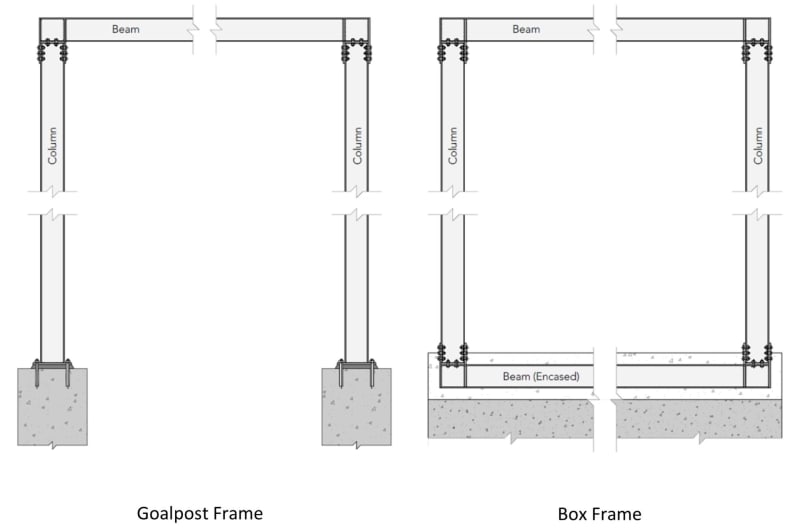liam1369
Structural
- Nov 13, 2014
- 73
Hi All,
Does anyone have any literature or design examples on steel moment box frames to allow for large openings in rear walls (typically). I am struggling to find any examples or design guidance online or in any steel design books.
In addition, can anyone explain in Simple terms when they are more suitable for use?
Is it simply when offset pad foundations for goalpost moment frame exceed bearing capacity?
I know it makes life easier as you can effectively use the same foundation by encasing the bottom beam slightly above.
Kind regards,
Liam
Does anyone have any literature or design examples on steel moment box frames to allow for large openings in rear walls (typically). I am struggling to find any examples or design guidance online or in any steel design books.
In addition, can anyone explain in Simple terms when they are more suitable for use?
Is it simply when offset pad foundations for goalpost moment frame exceed bearing capacity?
I know it makes life easier as you can effectively use the same foundation by encasing the bottom beam slightly above.
Kind regards,
Liam

